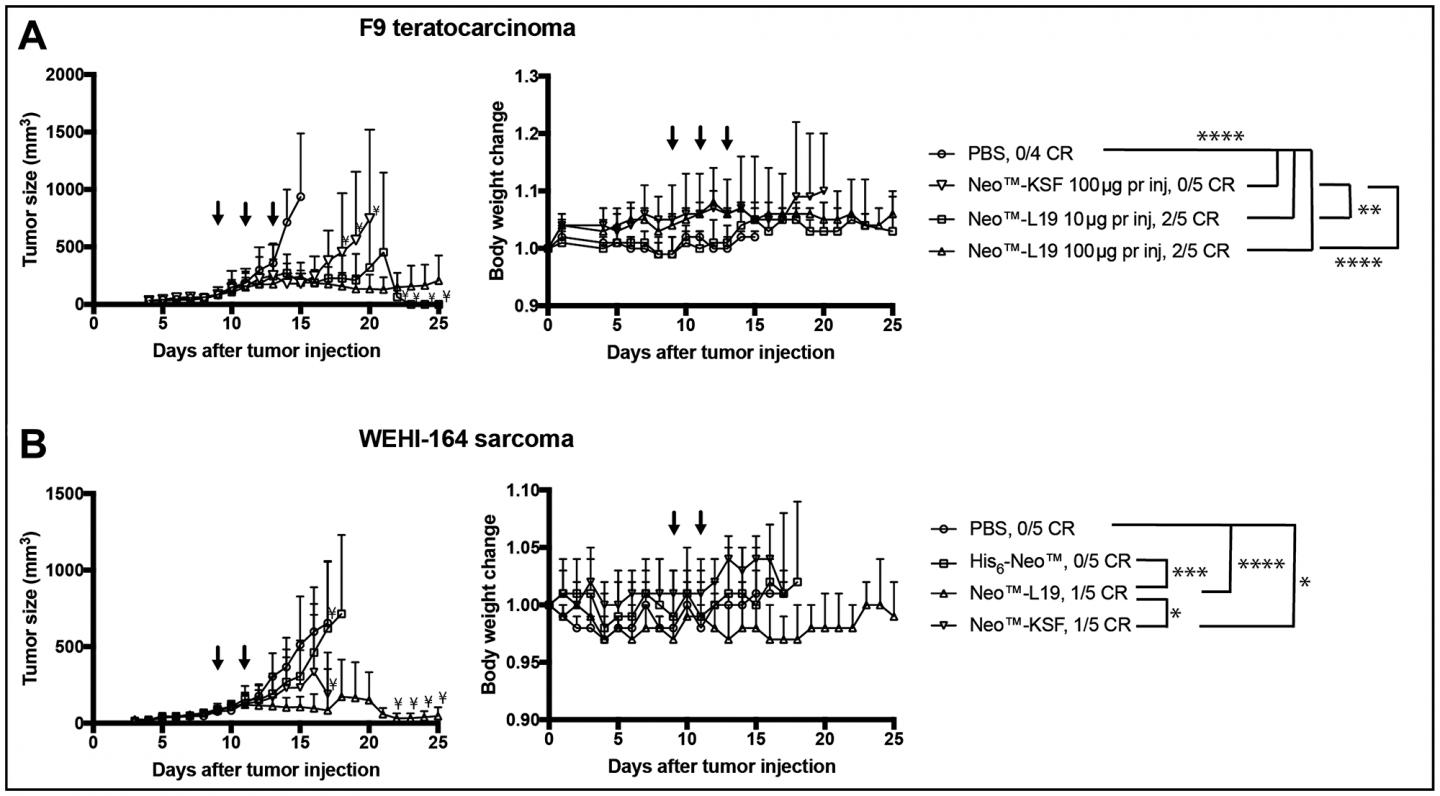“The results suggest that this product, or similar fusion proteins featuring an N-terminal fusion in the diabody format, may deserve to be investigated in clinical trials”

Credit: Correspondence to – Michael R. Mortensen – [email protected]
Oncotarget recently published “Targeting an engineered cytokine with interleukin-2 and interleukin-15 activity to the neovasculature of solid tumors” by Mortensen, et al. which reported that there is a growing interest in the antibody-based delivery of cytokines to the tumor environment as a means to boost the anti-cancer activity of tumor-resident T cells and NK cells.
Here, the authors described the expression and characterization of fusion proteins, featuring the L19 antibody and an engineered cytokine with interleukin-2 and interleukin-15 properties.
The cytokine moiety was fused either at the N-terminal or at the C-terminal extremity and both fusion proteins showed a selective tumor accumulation in a quantitative biodistribution experiment.
The N-terminal fusion inhibited tumor growth in immunocompetent mice bearing F9 carcinomas or WEHI-164 sarcomas when used as a single agent.
These results indicate that the antibody-based delivery of engineered cytokines to the tumor neovasculature may mediate a potent anticancer activity.
Dr. Michael R. Mortensen from The Department of Chemistry and Applied Biosciences (D-CHAB) at The Institute for Pharmaceutical Sciences (IPW) in Zurich, Switzerland said, “Cancer immunotherapy relies on the activation of certain leukocytes (most typically, T cells and/or natural killer cells), with the aim to induce a selective biocidal activity against tumor cells.”
IL2 muteins may alter the interaction of the cytokine with one or more of the IL2 receptor subunits, thus altering the selectivity towards the intermediate affinity receptor or towards the high-affinity receptor.
Since regulatory T cells predominantly express the high-affinity receptor, the selective activation of the intermediate affinity receptor has attracted considerable research efforts.
In a second approach, an increased selectivity towards the intermediate affinity IL2 receptor was achieved by blocking the interaction with CD25 either through IL2 mutations or by antibody blockade of the IL2 epitope involved in CD25 binding.
The Oncotarget authors described a series of engineered cytokines, which displayed biological features intermediate between those of IL2 and of IL15. IL15 interacts with CD122 and CD132 like IL2 but recognizes a different alpha subunit.
One of the new computationally designed cytokine variants, termed by the authors Neoleukin™-2/15, exhibited an increased affinity towards the receptor components shared by IL2 and IL15, with a complete absence of CD25 binding. Moreover, the newly engineered cytokine was much more stable compared to wild-type IL2.
The Mortensen Research Team concluded in their Oncotarget Research Paper that for certain cytokines the fusion with a tumor-homing antibody allows the creation of novel biopharmaceuticals, which display a preferential uptake in tumor lesions and which perform substantially better than the corresponding nontargeted cytokine in immunocompetent mouse models.
These authors and others have reported that not all cytokine payloads can be efficiently delivered to the tumor by fusion with antibodies.
Cytokine trapping at a low dose has been reported for fusion proteins based on interferon-gamma, but also for IL15 fusions.
Neo™-L19 is not glycosylated and the authors were pleased to see how the L19-based targeted delivery of the engineered IL2 and IL15 mimic led to an improved therapeutic effect for the F9 teratocarcinoma model. The contribution of L19-based targeting to an increased therapeutic index was less striking in the WEHI-164 model.
Collectively, the results presented indicate that a new fusion protein could be created, which displayed an excellent performance in biodistribution studies and which mediated a potent anticancer activity in two immunocompetent mouse models of cancer when used as a single agent.
The results suggest that this product, or similar fusion proteins featuring an N-terminal fusion in the diabody format, may deserve to be investigated in clinical trials.
Sign up for free Altmetric alerts about this article
DOI – https:/
Full text – https:/
Correspondence to – Michael R. Mortensen – [email protected]
Keywords – immunotherapy, immunocytokines, EDB of fibronectin, antibody-cytokine fusion proteins, engineered cytokine
About Oncotarget
Oncotarget is a biweekly, peer-reviewed, open access biomedical journal covering research on all aspects of oncology.
To learn more about Oncotarget, please visit https:/
SoundCloud – https:/
Facebook – https:/
Twitter – https:/
LinkedIn – https:/
Pinterest – https:/
Reddit – https:/
Oncotarget is published by Impact Journals, LLC please visit http://www.
Media Contact
[email protected]
18009220957×105
###
Media Contact
RYAN JAMES JESSUP
[email protected]
Original Source
https:/
Related Journal Article
http://dx.



